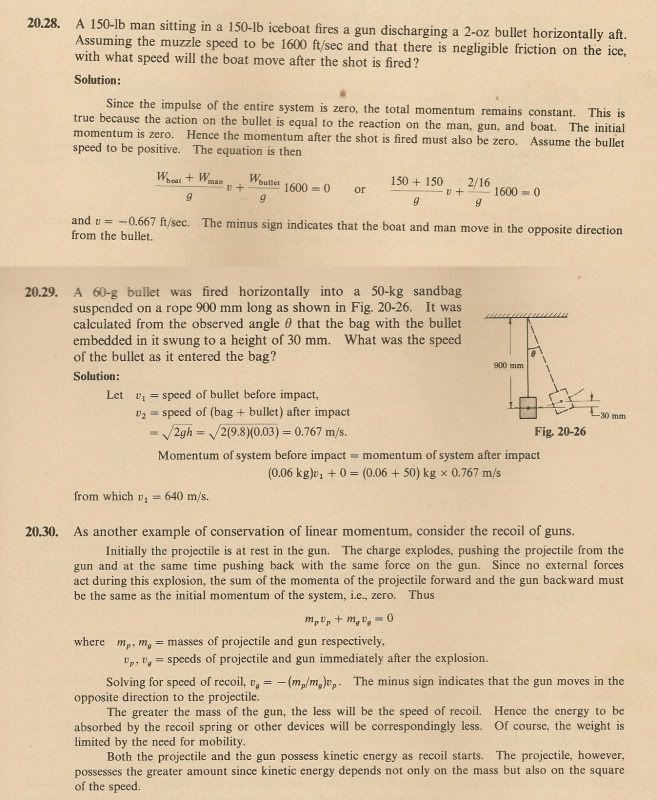Buckhorn, you're so confused between energy, velocity, momentum and work that it actually makes me laugh!
Brian Pfleuger has been 100% correct in every statement he has made.
I only have a master's degree in mechanical engineering with a minor in physics, but I've been designing rockets for NASA since 1987 and Newton's Laws are still valid.
Quote:
|
Originally Posted by buckhorn_cortez
NOT TRUE. The force of acceleration of the bullet is momentum. The opposite force is recoil - or the momentum of the gun.
|
No, the force that accelerates the bullet has nothing to do with momentum. That Force is quantified as the Mass of the bullet times the Acceleration of the bullet. F = M x A.
I can accelerate a bullet of a given mass to a given velocity with a large force over a short amount of time, or small force over a large amount of time. Either one will give the bullet the exact same energy and momentum. For example, a 125 grain bullet that reaches 1000 FPS at the end of a 4" barrel in .001 seconds has the exact same energy and momentum as a 125 grain bullet that reaches 1000 FPS at the end of a 20" barrel in .004 seconds.
Hopefully it's obvious to you that the bullet that accelerated to 1000 FPS in .001 seconds in the 4" barrel had a higher rate of acceleration than the bullet that accelerated to 1000 FPS in the 20" barrel in .004 seconds.
Since F = M x A, and the bullet M (mass) is identical in both cases, that means that more F was required to generate the higher A in the short barrel.
Since both bullets have identical mass and identical velocity, their energy and momentum are also identical. If your statement I referenced above was true, then identical bullets with identical velocities would have different momentum values depending on whether they were fired from a pistol (high accelerating force) or rifle (low accelerating force). Hopefully everyone realizes that this is incorrect!
Quote:
|
Originally Posted by buckhorn_cortez
But, all of the energy is conserved - including passing through the object and traveling down range if that's what happens until the bullet's forward velocity is equal to zero (it's resting on the ground), and the bullet has zero kinetic energy.
|
Nope, kinetic energy is NOT conserved in an INELASTIC collision.
http://www.uta.edu/physics/labs/1401/1401Lab6.pdf
Quote:
|
In an inelastic collision kinetic energy isn’t conserved, the ballistic pendulum is a classic example of this type of collision.
|
You may want to review these simple questions:
http://physics.bu.edu/~redner/211-sp...ballistic.html
Pay attention to the reminder at the bottom:
Quote:
Reminder:
Elastic collision: both energy and momentum are conserved.
Inelastic collsion: momentum is conserved, but energy is "lost".
|
As Brian stated, MOMENTUM is conserved. That's why a ballistic pendulum works.
You may find these problems from my old Schaum's Engineering Mechanics enlightening.
